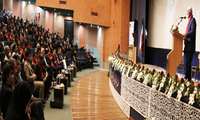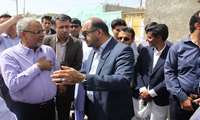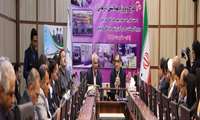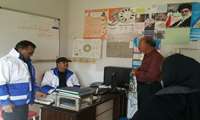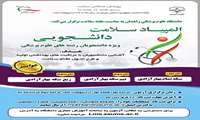World AIDS Day and International Volunteers Day 2017- Ceremony & Awards
World AIDS Day - December 1, 2017
Visit of Dr. Raman Velayudhan, WHO Coordinator for Vector Ecology and Management, 12-15 December 2017, Chabahar , Islamic Republic of Iran
Visit of Dr. Raman Velayudhan, WHO Coordinator for Vector Ecology and Management, 12-15 December 2017, Chabahar - I.R. Iran
World Health Organization Representative in Iran, Dr. Sameen Siddiqi, visiting Zahedan University of Medical Sciences, September 2017
Dr. Sameen Siddiqi, World Health Organization Representative in Iran, visited Zahedan University of Medical Sciences (ZAUMS) on 23rd and 24th September 2017.
Environmental Surveillance for wild poliovirus in sewage water becomes operational in Zahedan Capital of Sistan & Balouchstan Province, to complement acute flaccid paralysis surveillance
In 1988, the World Health Assembly resolved to eradicate poliovirus. Since then, polio incidence has decreased from an estimated 350,000 cases to 37 in 2016. The World Health Organization has included environmental Poliovirus surveillance in the new Strategic Plan of the Global Polio Eradication Initiative, as a supplement to Acute Flask Paralysis (AFP) surveillance for possible polio cases. Since polioviruses are relatively stable in aqueous environments, testing for polioviruses in sewage, or environmental surveillance (ES), has the potential to detect polioviruses circulating in the community without relying on clinical presentation of disease as does AFP surveillance.
Zahedan University of Medical Sciences launches an "Antibiotic Guardian Campaign", November 2017
Antimicrobial resistance (AMR) is a huge to public health with the latest figures showing the number of patients across the globe infected by resistant bacteria is increasing. Our overuse and misuse of antibiotics is making this worldwide problem worse. Bacteria are fighting back by adapting to antibiotics, our drugs are becoming ineffective in treating infections and the number of effective treatment options we have is reducing
The World Antibiotic Awareness Week 2017 events kicked off in Zahedan University of Medical Sciences, Zahedan, I.R. of Iran
The World Antibiotic Awareness Week 2017 events kicked off in Zahedan University of Medical Sciences, Zahedan, Iran
Zahedan University of Medical Science Disaster Management and Risk Reduction (DMRR) Team arrives in the city of Kermanshah to assess Public Health Services in Iran-Iraq border earthquake
The deadliest earthquake of the year struck the Kermanshah province, near the border of Iran and Iraq at 21:18 local timeon November 12.The two cities of Sar PoleZahab and Ghasre Shirin in the province, with a total population of almost 115 thousands, are reported to have suffered considerable damage, with almost 80% of infrastructure destroyed. In some cities running water and electricity are cut off. Many are forced outdoors in the cold weather as so many building have collapsed
A Health Olympiad Exam was conducted on the occasion of the "National Health Week" 2018 by Zahedan University of Medical Sciences
On the70th Anniversary of the World Health Organization, an academic Health Olympiad was organized to encourage the medical sciences students studying in different disciplines at the Zahedan University of Medical Sciences to get a grasp of the concepts of "Health For All" and "Universal Health Coverage" and the history of the Irans health system, and the reforms that have taken place in it during the past three decades, including: the establishment of the National Health Network, implementation of the Family Physician Program, and the Health System Transformation Plan.
In pictures: The French Delegation and Central BAFIA authorities visiting Hazrat-e Fateme Safe Delivery Post and Medical Mobile Unit in Zahedan, Iran
In pictures: The French Delegation and Central BAFIA authorities visiting Hazrat-e Fateme Safe Delivery Post and Medical Mobile Unit in Zahedan suburban areas

